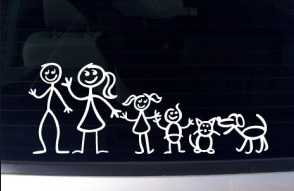Why First Impressions Start in the Parking Lot
We’ve all heard the phrase “first impressions matter,” but those impressions often begin before a single word is exchanged. One of the most underrated ways to gather insight about someone is by observing what they drive. I’ve found that meeting someone at a coffee shop like Starbucks—somewhere they have to drive to—gives me a valuable opportunity to quietly assess who I’m about to interact with.
Arriving a few minutes early, I position myself near a window where I can see them pull into the parking lot. That’s where the first clues appear. What someone drives can offer insight into their values, lifestyle, and even decision-making style. It’s not a perfect science, but it’s incredibly useful as a starting point—especially when you’re building rapport or trying to influence them later in a conversation.
Vehicles as Personality Indicators
Let’s take a few examples. If they roll up in a luxury car like a Cadillac or a Tesla, it may be an indicator that they value status, prestige, or perhaps even cutting-edge technology. They might be someone who cares about appearances and being seen as successful. That tells me that recognition and reputation might be motivating forces for them.
On the other hand, someone who arrives in a rugged pickup truck could be more utility-driven. They may prioritize function over form, possibly enjoy outdoor activities, or work in a trade where toughness and dependability matter. If they show up on a motorcycle—especially without a full business-casual getup—they might enjoy risk-taking or pride themselves on standing out from the crowd. That might mean they resist conventional thinking or are independent-minded.
These visual cues give you a way to tailor your approach. For instance, someone in a flashy sports car might respond to messages about high performance, exclusivity, or bold moves. Someone in a minivan plastered with “Honor Roll Student” bumper stickers? That’s someone deeply invested in family and achievement—perhaps risk-averse but loyal once they trust you.
Stickers Speak Volumes, Too
If the car itself is a statement, the stickers on it are the subtext. Political bumper stickers, for example, don’t just tell you who they voted for—they often hint at their broader worldview. A “Bernie” or “Obama” sticker may suggest they lean toward community values, regulation, and social fairness. A “Trump” or “NRA” sticker may reflect values like individualism, constitutionality, or traditional hierarchy.
Then you’ve got those window stickers shaped like turtles, paw prints, or family stick figures. These tell stories about how the person sees themselves and who depends on them. You might learn how many kids they have, the family’s gender dynamic, and whether pets are considered part of the tribe. This is invaluable for starting a conversation that feels personal. Try mentioning your dog or recent family event—it helps build “We Group” connections.
Even religious symbols—Jesus fish, evolution emblems, or scripture decals—offer a quick scan into what kind of language might resonate. For some, faith is central. For others, it’s science or skepticism. Either way, you’re getting more intel than you would in the first 20 minutes of small talk.
It’s Not Profiling—It’s Pattern Recognition
This isn’t about stereotyping. It’s about interpreting signals. Just as a detective gathers clues, a good communicator uses observations to form hypotheses—not conclusions. You still have to verify your assumptions through conversation, but these initial insights let you enter that conversation with a leg up.
It’s not always accurate. Some people borrow cars. Others drive something they inherited or got for a good deal. But generally speaking, the choices people make—especially when those choices are visible—reflect what they value.
A Personal Story on Seeding Discovery
After my tenure as the interim director at the SBDC, I heard that Pikes Peak State College (formerly Pikes Peak Community College) was seeking an entrepreneurship director. Having reviewed dozens of resumes for the SBDC director role, I knew many of those same applicants would likely apply for the entrepreneurship director position as well. I reached out to the hiring manager to offer some insights that might save her time interviewing candidates with either red flags or qualifications that simply didn’t align.
Before our meeting, I used the Data Axle Lifestyle database and discovered that she was a pet owner. So, I seeded a bit of “discovery” into the encounter. I went out and bought a 40-pound bag of dog food and strapped it visibly on the back seat of my Goldwing motorcycle.
Related Video: Data Axle (Formerly ReferenceUSA) LifeStyle Database Tutorial.
When I arrived at the coffee shop, I parked so the dog food was clearly visible. As I walked inside, having never met her before, the very first words out of her mouth were, “What kind of dog do you have?” That opened the door to an easy, warm conversation about dogs and pets.
Only after that rapport was built did we review her list of candidates. I gave her my honest take on who had the goods and who didn’t. A few weeks later, she asked to meet again and said, “After reviewing everything, I’ve come to a decision. There’s really only one person for this job—and that’s you.”
All because of a bag of dog food and a bit of pre-meeting research, I had built a genuine connection and made a strong first impression.
Adjusting Your Messaging for Maximum Impact
Once you gather these details, use them. If you suspect someone values image and prestige, frame your offer in a way that boosts their personal brand. If they appear more practical and grounded, lean into reliability, cost-effectiveness, or time savings. These micro-adjustments can make the difference between feeling “understood” and feeling “sold to.”
The goal isn’t manipulation—it’s alignment. When people feel that you “get” them, they’re more open, more trusting, and more likely to act. That starts not in your pitch deck, but in the parking lot.
What subtle clues have you picked up from a prospect’s vehicle, and how did you use that information to your advantage?












